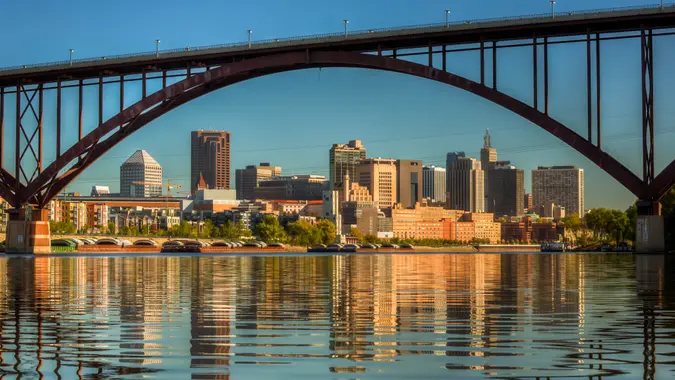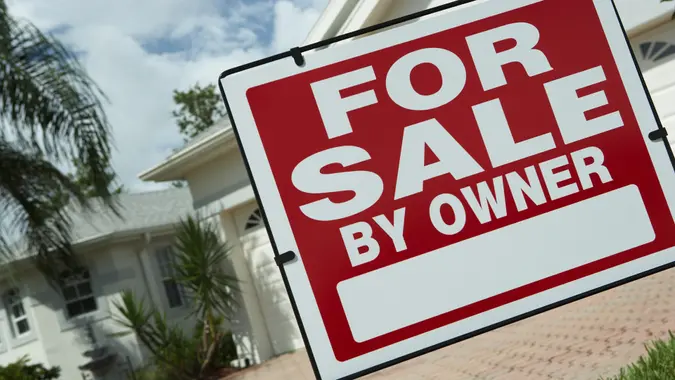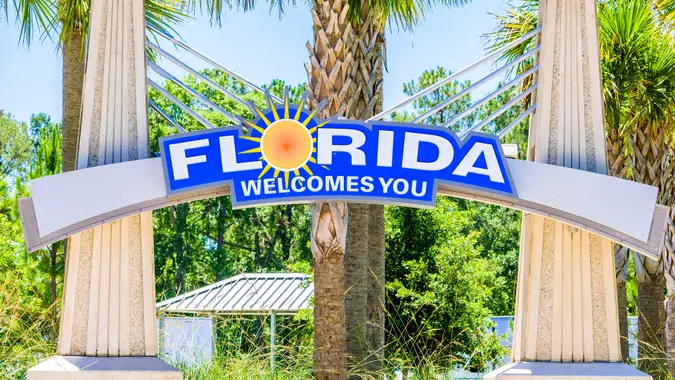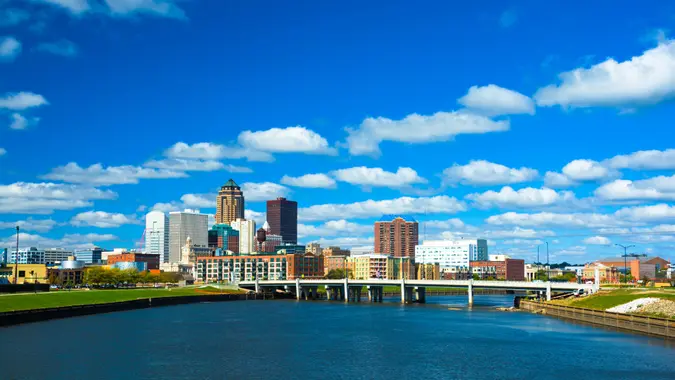Advertiser Disclosure
GOBankingRates works with many financial advertisers to showcase their products and services to our audiences. These brands compensate us to advertise their products in ads across our site. This compensation may impact how and where products appear on this site. We are not a comparison-tool and these offers do not represent all available deposit, investment, loan or credit products.
10 Cities Where Homeownership Could Be a Risky Investment
 Written by
Kerra Bolton
Written by
Kerra Bolton
 Edited by
Cory Dudak
Edited by
Cory Dudak

Commitment to Our Readers
GOBankingRates' editorial team is committed to bringing you unbiased reviews and information. We use data-driven methodologies to evaluate financial products and services - our reviews and ratings are not influenced by advertisers. You can read more about our editorial guidelines and our products and services review methodology.

20 YearsHelping You Live Richer

Reviewed by Experts

Trusted by Millions of Readers
Sundrenched cities in the southeastern region of the United States and California are beautiful but could carry a lot of risks for homeowners.
“With the increase in costs, interest rates and inflation, owning a home is now more expensive than ever,” said Christina Hsu, a real estate investor at Noblivest. “You also have to consider the ever-increasing occurrences of natural disasters such as storms, hurricanes, tornados, wind, earthquakes, fires, etc.”
In addition, ClaimGuide, a nonprofit that “bridges the gap between homeowners and insurance companies,” ranked cities across the United States based on their risk of extreme weather, crime rates, and home vacancies.
Here are the top cities where homeownership could be a risky investment.
Houston, Texas
An estimated 98% of the homes in Houston are built on land susceptible to extreme heat and flood risk. Of those homes, 64% are prone to flooding within the next three decades. The tax rates also rise if the weather conditions aren’t good enough.
“In Texas, median property taxes rose by 26% between 2019 and 2023,” Hsu said. “Nationwide, we find a whopping increase in home values by over 40% between 2019 and 2023. This is a risk to consider as home values continue to rise.”
San Bernadino, California
Nearly all of the properties in San Bernadino are at risk of extreme heat, and 91% are in wildfire zones. According to World Population Review, a global population data nonprofit, San Bernadino is also listed among the top 20 most violent cities in the United States, with 1,291 incidents per 100,000 residents.
Glendale, California
Like many California cities on the list, Glendale is often in the path of the region’s most notorious wildfires. About 99% of the homes are at risk for wildfire activity, and only nine fire stations are within city limits. With 80, Glendale has been among the top 10 U.S. cities to issue a natural disaster declaration.
New Orleans, Louisiana
The Big Easy may be challenging for homeowners despite installing a $14.5 billion flood protection system after Hurricane Katrina. Nevertheless, 99% of the homes in New Orleans remain at risk of severe flooding within the next three decades. The median age of homes in the city is 62, leaving homeowners at a high risk for property damage.
Fort Lauderdale, Florida
Over one in five homes or 21.4% of homes in Fort Lauderdale, are currently unoccupied. That doesn’t seem like a major factor until the city is at risk for extreme heat (100% of homes) and severe flooding (79%). Living next to an unoccupied home means no one is preparing for natural disasters, exposing your home to large debris and other communal damage from storms and floods.
Miami, Florida
Watching waves hit luxury skyscrapers on television and in films may look cinematic, but not so much if you live in Miami. About 55% of the city’s homes are at risk of severe flooding within the next 30 years, and all homes (100%) are at risk for extreme heat. In addition, there are only 3.3 fire stations per 100,000 Miami residents, which could mean slower emergency response times and the potential for more property damage.
Hollywood, Florida
The average home in Hollywood, Florida, was built in 1968 before regulators implemented modern safety codes. Like the other cities on this list, 56% of its homes are at risk of flooding, and 100% are at risk of extreme heat. With a home vacancy rate of 15.9%, protecting all homes from community storm damage is challenging.
Baton Rouge, Louisiana
Crime is rampant in Louisiana’s capital, with an average of nearly 5,900 incidents of property crime per 100,000 residents. Baton Rouge reports the most crime of any city on the top 10 list. Nearly all homes are at risk of extreme heat, and only 34% are at risk for flooding within the next three decades.
St. Petersburg, Florida
While St. Petersburg enjoys 361 days of sunshine a year, the city’s homes (100%) are at risk of extreme heat, and 47% face flood risks in the next 30 years.
Rancho Cucamonga, California
Touted as an “Urban Green Oasis,” all (100%) of the homes in Rancho Cucamonga bear the burden of being affected by a wildfire, 90% of homes face extreme heat, and 36% of homes are likely to be affected by flooding within the next 30 years.
More From GOBankingRates
Share This Article:




You May Also Like



10 Affordable Housing Markets Where You'll Still Need $50K To Buy a Home
November 17, 2025
5 min Read






50 Cities With the Highest Mortgage Balances in 2025 -- 23 Are in California
November 14, 2025
5 min Read

One Home Upgrade That Almost Always Pays Off, According To an HGTV Star
November 14, 2025
5 min Read

5 Florida Beach Towns To Buy Property in the Next 5 Years, According to Real Estate Agents
November 13, 2025
5 min Read

I'm a Real Estate Agent: Here Are 5 Renovations Buyers Want the Most in 2026
November 10, 2025
5 min Read


It Costs More Than $67K Just To Sell a Home -- These 6 Expenses Give You the Best ROI
November 07, 2025
5 min Read

Make your money work for you
Get the latest news on investing, money, and more with our free newsletter.
By subscribing, you agree to our Terms of Use and Privacy Policy. Unsubscribe at any time.


Thanks!
You're now subscribed to our newsletter.
Check your inbox for more details.



Sending you timely financial stories that you can bank on.
Sign up for our daily newsletter for the latest financial news and trending topics.
For our full Privacy Policy, click here.
Looks like you're using an adblocker
Please disable your adblocker to enjoy the optimal web experience and access the quality content you appreciate from GOBankingRates.
- AdBlock / uBlock / Brave
- Click the ad blocker extension icon to the right of the address bar
- Disable on this site
- Refresh the page
- Firefox / Edge / DuckDuckGo
- Click on the icon to the left of the address bar
- Disable Tracking Protection
- Refresh the page
- Ghostery
- Click the blue ghost icon to the right of the address bar
- Disable Ad-Blocking, Anti-Tracking, and Never-Consent
- Refresh the page



